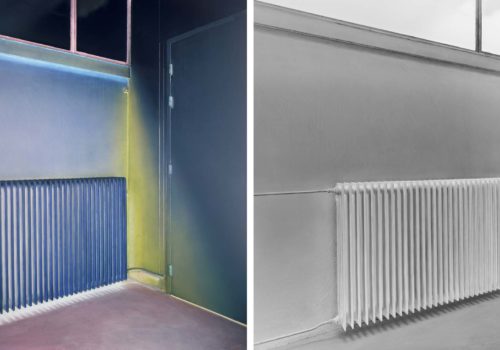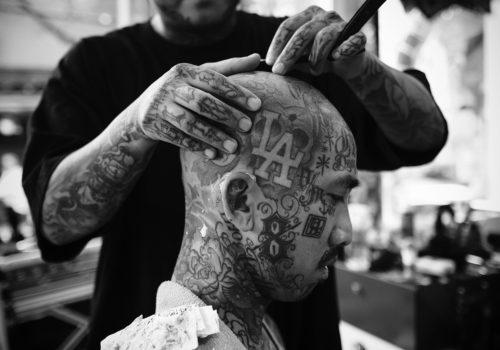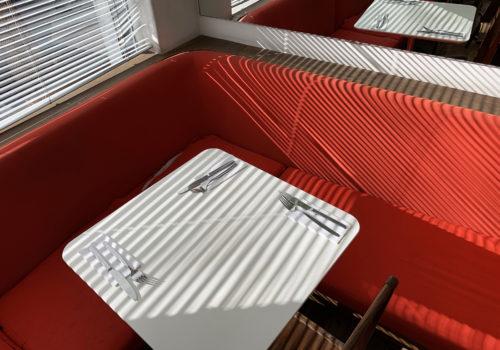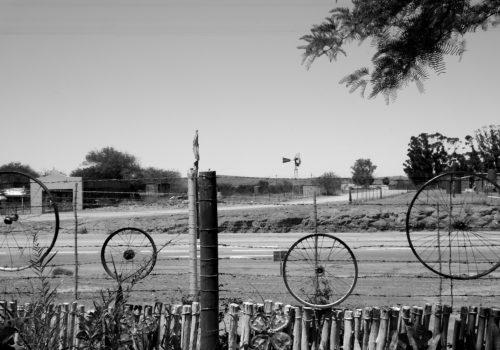Loevenbruck (Paris) presents a selection of photographs and film of the last two years by Gábor Ösz. In The Colours of Black and White, the representation of a studio corner touches on the basics of photography as visual representation. To achieve this, the artist has repainted a segment of reality in such a way that in a black-and-white negative it appeared as a positive image. For this purpose he chose the corner of his studio. His intention was to emulate the effects of a black-and-white photograph. In other words the tonality of the colours was very important, but he could use a great many colours to achieve the desired effect. Two sharply contrasting colours may show up in a black-and-white photograph in perfectly identical tones. As a result of this, the colour picture apparently looks as if it follows no logical system, while a black-and-white negative gives the impression of a traditional black-and-white positive photograph. The colour and black-and-white photographs form a diptych; spiritually inseparable, they complement each other in a logical context. One image interprets the other.
Parallel to the photographic work, Gábor Ösz shot a film from the same scene entitled From Pigment to Light. This HD projection further investigates the ghostly effect of photography. Or how the colour pigments transpose into light. The opening shot shows the segmented structure of a radiator and through the continuing, slow movement of the zoom the picture field expands. Then we see the fully painted scene in black-and-white negative, showing the representation of a normal image. But by zooming out more and rolling back with the camera, the view continues to expand. By showing positive and negative parts of the scene at the same time and turning the image into colour, confusion arises and the almost abstract painted space loses the ground of reality.
Gábor Ösz’s work is based on a fascination with the observation of reality and the relationship between man and the space that surrounds him. Through the use of analogue photographic processes, such as the camera obscura and the pinhole technique, a body of subdued and aesthetically sharp profiled photographic work has arisen. A constant factor is the reflection upon the moment when an image is created and thus becomes perceived as such.
















